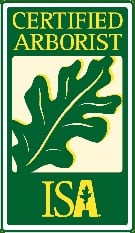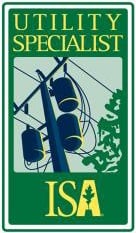Is your outdoor space looking a little empty since you took down that tree? You don’t have to leave that spot barren—there are plenty of great replacement tree options out there!
If you’re researching the best replacement trees for your NC landscape, we’ve gathered some helpful suggestions and planting tips for you. Let’s dig in!
Make your life easier with a native tree
Before we get to specific recommendations, let’s talk about native trees and why they should be at the top of your list. Native trees grow in an area naturally, as opposed to being introduced by humans from another ecosystem. Native trees and plants have adapted over time to be well suited to their local environments, meaning they thrive in the soils, temperatures, and precipitation levels around them.
Why does all of that make your life easier? Since native trees are already matched to their local environment, they tend to establish more quickly and grow into hardier, healthier trees. They also usually don’t need as much water, fertilizer, or pest control measures compared to non-native trees, which makes maintaining these trees a breeze.
Finding the right tree for your space
Don’t make the mistake of planting the wrong tree in the wrong place. Native trees tend to thrive in their natural environments, but that doesn’t mean any native tree will thrive in the conditions of your specific property. During your search for a replacement tree, take note of the tree’s mature height and width, soil/pH requirements, sun requirements, water requirements, and other attributes to figure out which tree would best match your space.
Replacement tree recommendations
Without further delay, here are five replacement trees that you’ll enjoy in your yard. All of the trees below are native to our area and also heat tolerant.
River birch (Betula nigra)

You’ll get the best foliage color if you plant your river birch in a spot that gets full sun.
Photo courtesy of Paul Wray, Iowa State University, bugwood.org
If you’re looking for a taller tree, a river birch may be for you. River birches are deciduous trees (meaning they lose their leaves in the fall) with exfoliating bark. These trees can grow to be 30 to 70 feet tall and 40 to 60 feet wide. They sprout flowers in early spring, and their foliage turns a golden yellow in the fall. They typically do well in moist, acidic, sandy, or rocky, well-drained loam. They can thrive in full sun or partial shade, but you’ll get the best foliage color if you plant them in a spot that gets full sun.
The ‘Duraheat’ cultivar is great for our area because on top of being heat tolerant, it’s also insect and disease resistant.
Eastern redbud (Cercis canadensis)

As long as the soil is well-drained, your Eastern redbud should thrive in any type of soil.
Photo courtesy of Margaret Pooler, bugwood.org
If you’re looking for a smaller tree to add to a pollinator garden or an “understory” tree to add dimension to your yard, an eastern redbud is a great option. Eastern redbuds can be grown as shrubs or small trees. They get their name from the red, rosy pink flowers that bloom in early spring.
As long as the soil is well-drained, these trees should thrive in any type of soil. They do well in full sun to partial shade, and they grow 9 to 12 feet tall and 10 to 15 feet wide. Their pretty flowers will attract plenty of birds, bees, and butterflies to your property.
The ‘Merlot’ cultivar, with its vivid wine-colored foliage, is known to be especially hardy.
Black gum (Nyssa sylvatica)
If you’re looking for more of a medium-sized tree, consider a black gum. Black gum trees are ornamental deciduous trees that grow to be approximately 20 to 30 feet tall in cultivation. These trees are hardy enough to be planted in poorly drained or dry soil, but they prefer average, medium to wet soils. If planted in wet soil, make sure the area gets full sun. The foliage of these trees turns yellow, orange, purple, or red in the fall.
Bald cypress (Taxodium distichum)
If you need a tree to go with the other conifers (cone-bearing trees) on your property, go with a bald cypress. These trees can grow 50 to 70 feet high and 20 to 30 feet wide. They can tolerate a variety of soil conditions and enjoy full sun to partial shade. Being one of only a few deciduous conifers in North America, their needles will turn a bright rusty color in the fall before dropping.
Kay Parris magnolia (Magnolia grandiflora)

Kay Parris magnolias are known for their glossy green leaves and fragrant white flowers.
Photo courtesy of Charles T. Bryson, USDA Agricultural Research Service, bugwood.org
If you’re looking for an evergreen, put Kay Parris magnolias on your list. Aside from their glossy green leaves, these trees come with fragrant white flowers. They grow to be about 20 feet high and 10 feet wide. They thrive in full sun conditions and clay, loam, or sandy soil with good drainage.
If you need to replace a dead or damaged tree on your property, let us handle the removal. We’re a preferred tree removal company in the Charlotte and Raleigh, NC areas. Once planted, we can also help you care for your new replacement tree and the rest of the trees on your property. Fill out the form below now to request a consultation:
Like what you just read?
Then you'll love this: Top 10 Trees Found Across NC Yards







